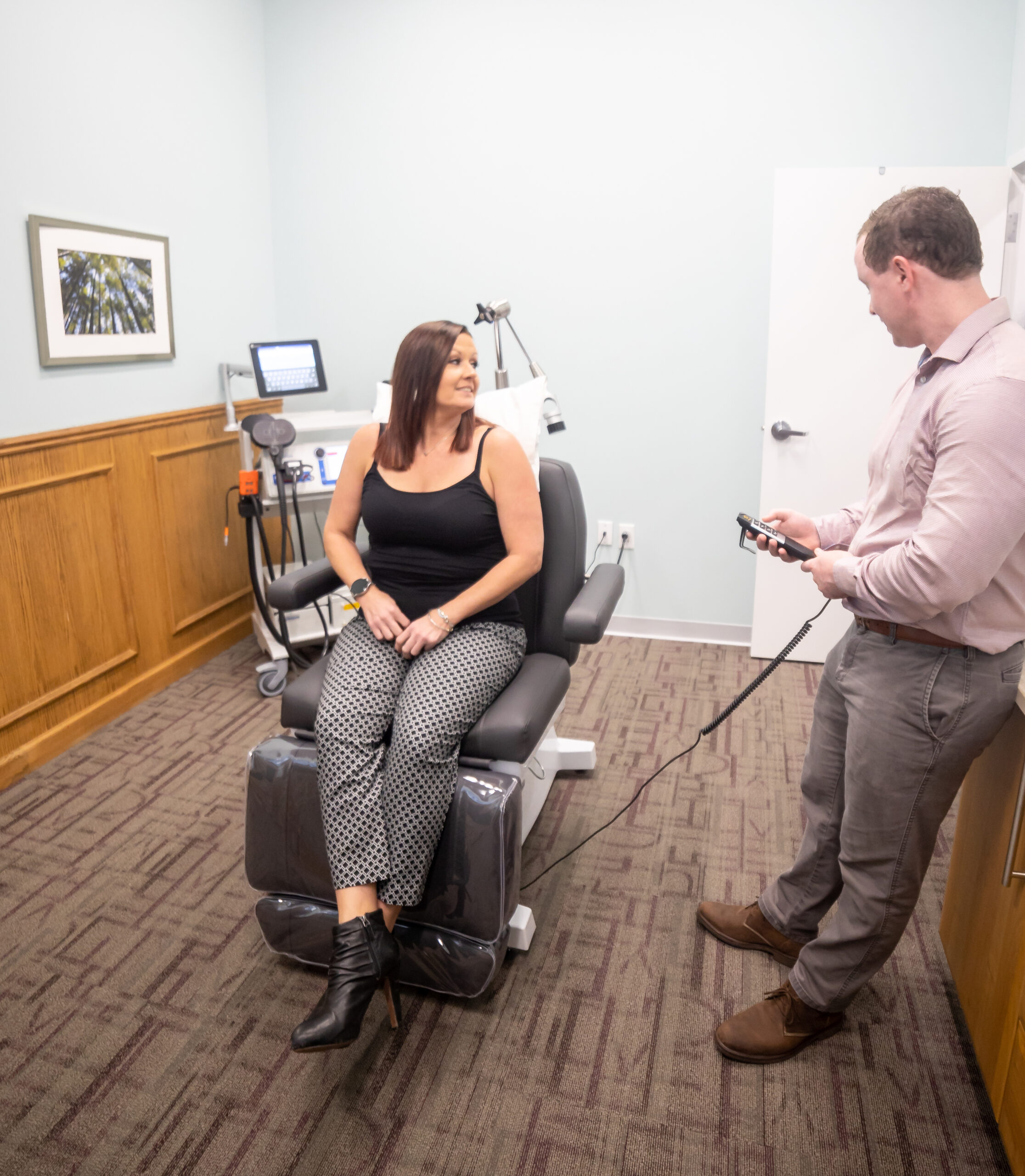As in any significant medical innovation, the evolution of transcranial magnetic stimulation (TMS) therapy has been a journey of discovery, filled with both excitement and obstacles. Today, we’re going to delve into some of the early challenges faced by TMS, from the technical hitches to ethical concerns and practicality issues. We will journey together, looking at how the research community overcame these hurdles and the lessons we can learn for future breakthroughs.
Getting to Grips with Technical Hitches
As in any significant medical innovation, the evolution of transcranial magnetic stimulation (TMS) therapy has been a journey of discovery, filled with both excitement and obstacles. Today, we’re going to delve into some of the early challenges faced by TMS, from the technical hitches to ethical concerns and practicality issues. We will journey together, looking at how the research community overcame these hurdles and the lessons we can learn for future breakthroughs.
The Accuracy of TMS Therapy
In the beginning, it was tough to ensure that the magnetic fields were targeting the correct parts of the brain. Researchers had to perfect the methods used to pinpoint brain areas, as misdirection could lead to ineffective treatment or even side effects.
In the early days of TMS therapy development, the process of accurately pinpointing the magnetic fields to the correct areas of the brain was a bit like finding a needle in a haystack. After all, the brain isn’t a homogeneous organ – it’s a complex mesh of different regions, each with specific functions and responses. To make things even more challenging, these regions aren’t conveniently labeled and neatly compartmentalized, like sections on a map.
This lack of precision could lead to less effective treatments, or worse, unwanted side effects. Imagine trying to treat a tiny, specific area of the brain for depression, but accidentally stimulating a nearby region responsible for a completely different function. The result could be unintended cognitive or physiological effects. Hence, ensuring that the magnetic fields were accurately targeting the right parts of the brain was of paramount importance. In response to this, researchers doubled down on their efforts, using advanced neuroimaging techniques, and fine-tuned their methods to achieve better accuracy in TMS therapy.
For the pioneers of TMS therapy, achieving this accuracy was a combination of evolving technology, innovative problem-solving, and, of course, a deep commitment to patient safety and well-being. The journey wasn’t easy, but the valuable lessons learned have played a key role in shaping TMS therapy into the respected treatment modality it is today.
The Consistency of the Therapy
It was also difficult to maintain the same level of stimulation over multiple treatment sessions. Variation in the strength or position of the magnetic fields could lead to inconsistent results, making it hard to determine if the treatment was effective or not.
The initial stages of TMS therapy also faced significant challenges in maintaining consistency across treatment sessions. Remember, we’re dealing with a therapy that relies on administering carefully controlled magnetic pulses to specific areas of the brain. Ensuring the consistency of these pulses – both in terms of their strength and position – was crucial for successful treatment.
However, this was easier said than done. Even slight variations in the strength or position of the magnetic fields could lead to inconsistent results. This inconsistency could render the treatment less effective or could complicate the evaluation of treatment outcomes. For instance, if a patient’s symptoms improved, it was crucial to know whether this was due to the TMS therapy or merely a result of natural fluctuation in the patient’s condition.
Addressing this issue required rigorous standardization procedures and significant technological refinement. Researchers had to establish protocols for maintaining the consistency of magnetic field strength and position across different treatment sessions. Additionally, they had to develop more advanced and reliable TMS machines capable of delivering these precisely controlled magnetic fields.
Navigating these challenges was not a straightforward process. But through persistent effort and ongoing refinement, we’ve managed to achieve a level of consistency in TMS therapy that greatly enhances its effectiveness and reliability.
Fortunately, advances in neuroimaging and device technology overcame these hurdles, leading to improved precision and consistency in delivering TMS therapy.
Tackling Ethical Concerns
As with any new medical treatment, TMS therapy also faced a plethora of ethical concerns. After all, we were dealing with a method that influenced the brain, the command center of our thoughts, feelings, and behaviors.
The ethical considerations in TMS therapy are critical to its practice. They ensure the dignity, autonomy, and safety of patients while maintaining the treatment’s integrity.
The Importance of Informed Consent
Informed consent is the cornerstone of any medical treatment, and TMS therapy is no exception. Patients have the right to know the potential risks and benefits associated with this treatment before they give their consent.
It’s essential to remember that informed consent does not replace ethical practice. Rather, it is an integral part of it. Therefore, patients must be provided with clear, comprehensible, and adequate information about TMS therapy to help them make informed decisions.
Ensuring Equal Access
The principle of equal access asserts that every patient, regardless of their socioeconomic status, race, ethnicity, or other factors, should have equal opportunities to access TMS therapy. However, the cost of this therapy can be a barrier for some patients, and limited insurance coverage might further exacerbate this issue. It’s a challenge we must continually address to ensure fair access to TMS therapy.
Understanding the Long-Term Effects
As TMS therapy is relatively new, the long-term effects are not yet fully understood. More research is needed to understand the potential risks and benefits of using TMS therapy in the long term. The treatment’s influence on the patient’s autonomy and mental capacity are significant considerations that require further exploration.
Additional Ethical Concerns
Beyond these main ethical points, other considerations include device safety and the necessity for proper protocols during TMS therapy. Patient screening is vital to ensure that TMS therapy aligns with the patient’s condition and needs. Furthermore, understanding the treatment’s impact on the patient’s genuine wishes and views on its efficacy are technique-related ethical concerns that need more attention.
By carefully addressing these issues through comprehensive patient education, policy adjustments, and ongoing research, we made strides in surmounting these ethical challenges.
Practicality Issues: From Theory to Practice
Finally, practicality issues were a significant concern for TMS therapy. Simply put, it’s one thing to have a promising treatment on paper or even in a research lab, but quite another to implement it in a real-world clinical setting.
Practical challenges included:
- Resource availability: TMS therapy required specialized equipment and trained professionals to administer the treatment, both of which were scarce in the early days.
- Patient acceptance: Convincing patients to accept a new form of treatment, especially one that involves direct interaction with their brain, was no easy task.
- Cost-effectiveness: Although TMS therapy showed promise, it was initially expensive, raising questions about its cost-effectiveness compared to existing treatments.
Through the collective efforts of clinicians, researchers, and healthcare providers, we have made significant progress in translating TMS therapy from theory to practice.
The evolution of TMS therapy was not a smooth ride. But, it’s through these challenges that we learned and grew, bringing this revolutionary treatment to the forefront of modern medicine. By acknowledging and addressing these early hitches, ethical concerns, and practicality issues, we have set the stage for TMS therapy’s growing role in mental health treatment today and beyond.





